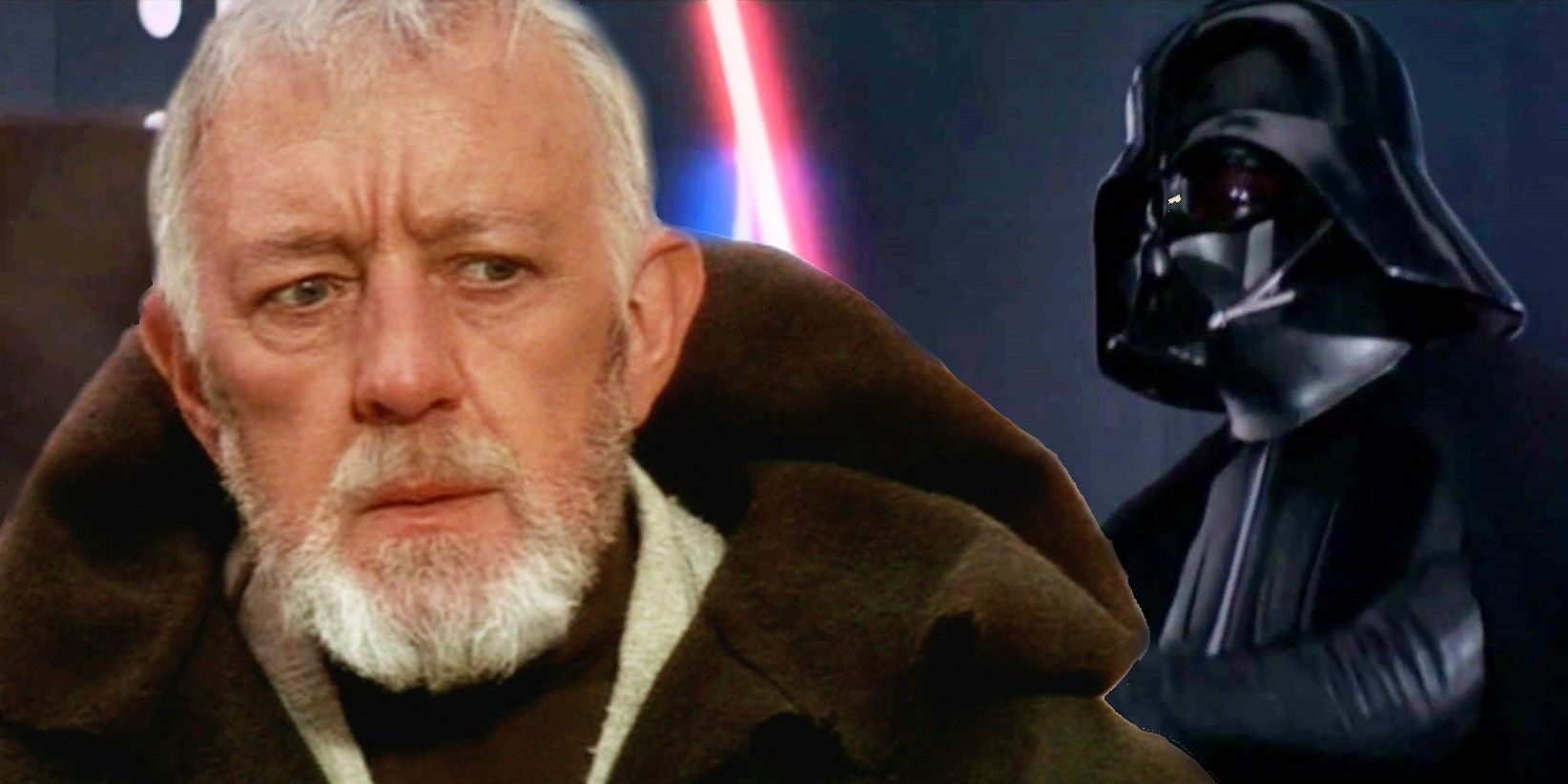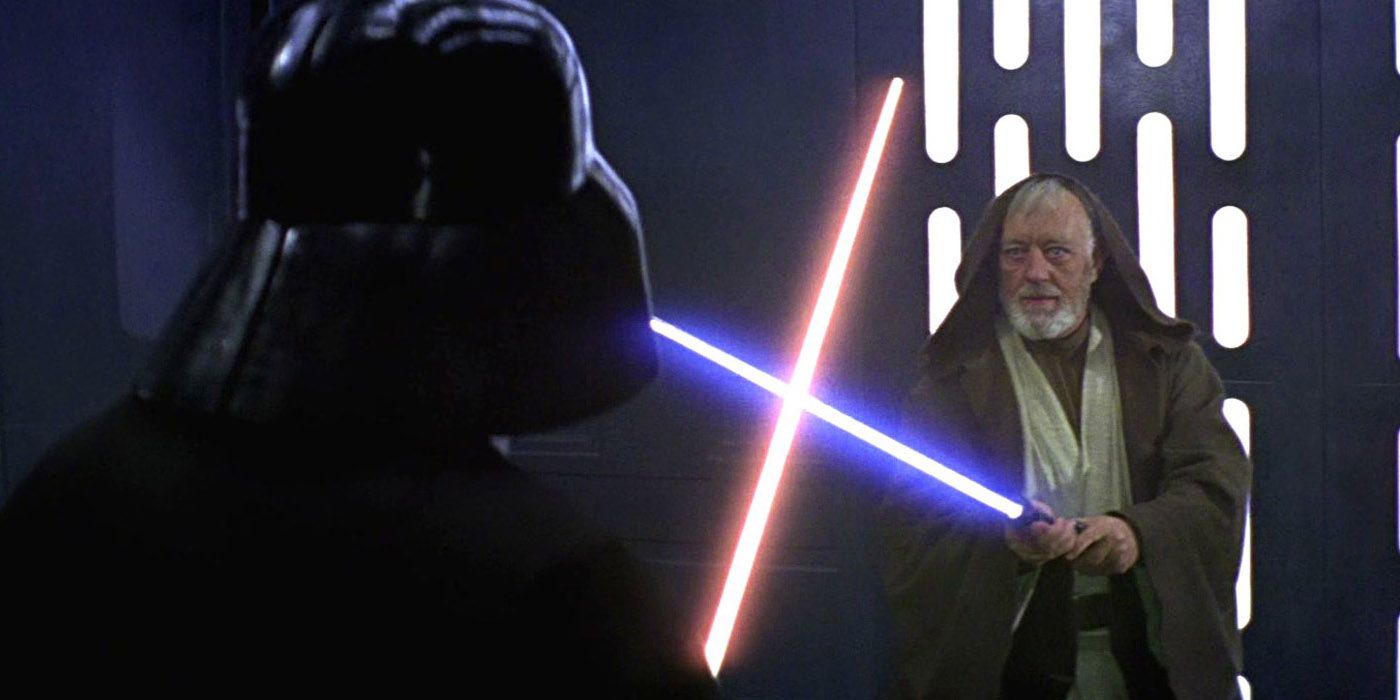
Obi-Wan Kenobi wasn't originally slated to meet his end in the first Star Wars movie. Released in 1977, the plot of George Lucas' original Star Wars is now more or less integrated into the world's cultural consciousness, especially when it comes to the epic showdown between Obi-Wan Kenobi and Darth Vader. After finding Luke Skywalker on Tatooine and starting the young farm boy on a journey towards becoming a Jedi, Obi-Wan guides his companions onto the Death Star to rescue Princess Leia. Allowing the Millennium Falcon to escape, Kenobi confronts Darth Vader in a lightsaber duel, but accepts death after promising he'll become stronger should Vader strike the fatal blow.
Obi-Wan's death has a profound impact upon the rest of the Star Wars series. Luke Skywalker is forced to seek tutelage from Yoda on Dagobah, while Kenobi begins speaking to his final pupil from beyond the grave. Fortunately for him, Kenobi also isn't alive to deal with the full consequences of lying about Luke's father. In hindsight, Kenobi's death feels like a necessary part of the first Star Wars trilogy. Luke must set out alone to become the Jedi the Rebellion needs rather than relying on the experience and power of Kenobi, while Darth Vader killing Obi-Wan also sets up the concept of Force ghosts, which have since become integral to the franchise.
However, Lucas didn't originally intend Obi-Wan Kenobi to perish during the Death Star battle. In the pages of an early draft script posted online courtesy of The Peter Mayhew Foundation, the sequence plays out similarly, but with one key difference. After disabling the Death Star's tractor beam, Ben reaches the hanger only to be confronted by Darth Vader and a procession of oncoming Stormtroopers, Luke's group arrive shortly after with everyone looking to escape in the Millennium Falcon. In the final version, Luke watches on as Obi-Wan is defeated by Vader, and is then hurried aboard in spite of grief. In the earlier draft, however, Obi-Wan is being soundly beaten by his old apprentice, but manages to outsmart Vader by shutting a blast door to separate them. Luke, Han, Leia and Chewie then arrive to disperse the Stormtroopers, and Luke helps a wounded Obi-Wan back onto the Millennium Falcon.

Of course, George Lucas would later amend this scene so that Obi-Wan was slain by Darth Vader and the Falcon would leave with one less Jedi on board than when it arrived, but the exact reason for the change is somewhat murky. A version of Lucas' Star Wars script dated shortly after the "Obi-Wan lives" draft features the same scene but includes the character's death as fans know it today. Even so, Alec Guinness previously stated that he was the one who told Lucas to kill off the wizened Jedi. It seems that Lucas was undecided over which script to use, so Guinness made the choice for him, since the actor was famously disenchanted with the whole experience and wasn't keen on returning for a sequel.
While it certainly would've been a treat to see more of the original Obi-Wan Kenobi (if not so much a treat for Guinness himself), the old hermit's death is a necessary one for the overall Star Wars story. Without Obi-Wan, the entire responsibility of the Jedi falls squarely on Luke's shoulders, Vader is set up as a legitimate, deadly threat, and the path is clear for Yoda to be introduced. Meanwhile, the concept of fallen Jedi coming back as voices or specters only adds to the mysterious allure of the Force. Had Obi-Wan Kenobi survived the first Star Wars film, The Empire Strikes Back, widely considered to be the strongest of the Star Wars movies, would have been a very different proposition.
from ScreenRant - Feed https://ift.tt/38FqgZC

0 Comments